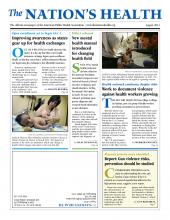Parents are more likely to secure young children in safety restraints in vehicles if the use of such restraints is mandated by laws, according to a recent analysis of practices in the U.S. and Canada.
In the United States, deaths of children ages 1-3 in car crashes have dropped more than 50 percent in the past three decades. Still, most parents are unaware of the need for proper child restraints for children ages 4 to 8, according to the literature review, which was published in the June issue of the Journal of the American Academy of Orthopaedic Surgeons. According to the Centers for Disease Control and Prevention, motor vehicle crashes are the leading cause of death for children ages 1 to 17. Forty-six percent of child fatalities occur among children younger than age 5 who are unrestrained in a vehicle. Even when safety restraints are used, they are often used improperly, the review found.
Up until age 2, children should be placed in rear-facing car seats, according to the American Academy of Pediatrics. Children older than age 2 who have outgrown rear-facing seats should use forward-facing seats. Older children should sit in booster seats until the child reaches a height of 4 feet 9 inches.
“The safest position for a child is the rear center seat because side impact crashes are more likely to cause serious injury and fatality, with the greatest risk associated with perimeter seating,” said Walter Truong, MD, pediatric orthopedic surgeon at Gillette Children’s Specialty Healthcare in St. Paul, Minn., and lead author of the review.
For older children, booster seats are important because improperly positioned seat belts have the potential to cause serious injury in an accident.
In the U.S., state laws vary regarding the use of booster seats. The District of Columbia, Puerto Rico and 48 states require booster seats for children who no longer fit in child safety seats but are too small to use an adult belt safely, according to the Governors Highway Safety Association.
In Canada, six provinces require the use of booster seats for children younger than age 8 or less than 4 feet 9 inches.
A Canadian roadside survey found that in provinces with the legislation, 25 percent of children rode in booster seats, whereas provinces without the requirement had just 16 percent compliance with booster seat recommendations.
Another study found that incentives can help increase safety seat use. The January 2006 study published in Cochrane Library found that parents who received discount coupons for booster seats or were given free booster seats along with education about their use were more likely to use them properly.
Part of the problem is that many pediatricians are not aware of the safest ways for kids to ride in cars, Truong said.
“We’re undereducated in general,” Truong told The Nation’s Health. “It’s not a big push in the media. It doesn’t seem like a priority.”
Truong said the proper use of child safety seats should be shared by everyone from teachers to pediatricians to politicians, perhaps through creative means.
“I think we should put it into the school or have a public service announcement and have a celebrity endorse it,” he said.
For more information on the review, visit http://www.jaaos.org/content/21/6/323.abstract.
Parents can find more information on proper child passenger safety at www.nhtsa.gov/Safety/CPS.
- Copyright The Nation’s Health, American Public Health Association









